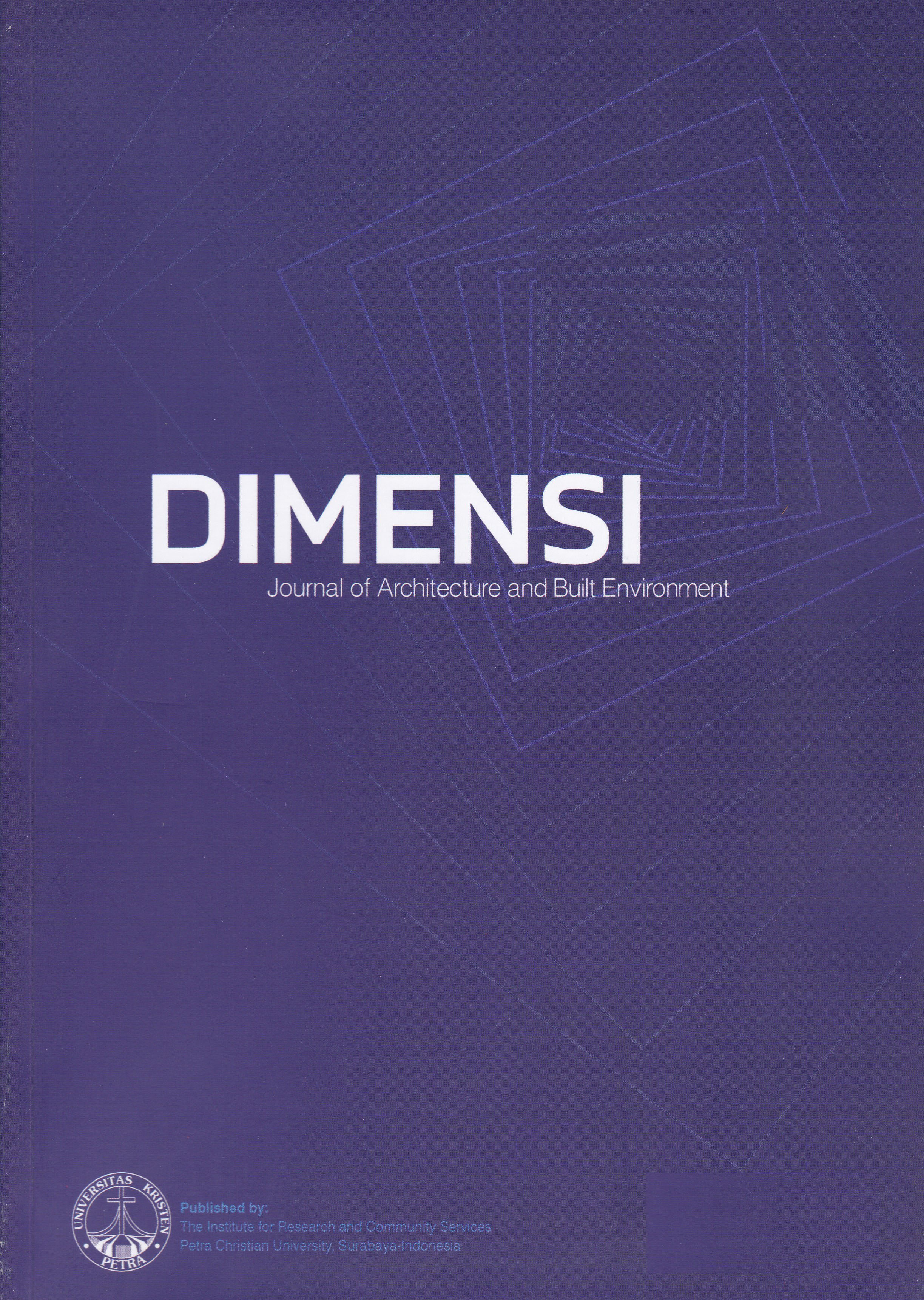CHANGE IN THE IMAGE OF REGION TOWARD THE SPATIAL SETTING AND BEHAVIOR (A case study of Tamansari "Cyber" Village, Yogyakarta)
 :
:
https://doi.org/10.9744/dimensi.48.1.9-18
Keywords:
Cyber village, information technology, behaviour, spatial settingAbstract
Cyber village is a residential area in RT (neighborhood association) 36 in the tourist area in Tamansari Yogyakarta. It has recognized image as an information technology based region with good internet network. Internet technology at the cyber village is slowly changing the behavior of the citizens from the social, economy, culture and tourism aspects. The behavior changes on the social, economic, cultural and tourism aspects affect the spatial setting at Tamansari "cyber" village to become a unique tourist area. The methods used in this research were Qualitative Research through observation to identify phenomena that occur, interviews, and literature studies that were analyzed by behavior setting method. The results of this research showed that changes in the image of the region influence the citizens’ behavior that finally creates certain spatial settings to meet the needs for space which could accommodate the village potentials, covering the social, economic, tourism and cultural potentials.
Downloads
References
Barker, R. (1987). Prospecting in environmental psychology (In D. Stocols & I. Altman (Eds.), Handbook of environmental psychology ed.). New York: John Wiley and Sons.
Google earth.com. (2016, August 21).
Hakim, B. R. (2016). Logbook Penelitian Penerapan Citra Visual sebagai pembentuk “Public Image”. Yogyakarta.
Heft, H., Hoch, J., Edmunds, T., & Weeks, J. (2014). Can the Identity of a Behavior Setting Be Perceived Through Patterns of Joint Action? An Investigation of Place Perception. Behavioral Sciences, 4(4), 371–393. http://doi.org/10.3390/ bs4040371
John, N. (2004). Psikologi Lingkungan. Bandung: Andira.
Lang, J. (1987). Creating Architectural Theory. New York: Van Nostrand Reinhold Company.
Luke, D. A., Rappaport, J., & Seidman, E. (1991). Setting phenotypes in a mutual help organi¬zation: Expanding behavior setting theory. American Journal of Community Psychology , 19(1), 147-167.
Popov, L., & Chompalov, I. (2012). Crossing Over: The Interdisciplinary Meaning of Behavior Setting Theory. International Journal of Humanities and Social Science, 2(19), 18–27.
Prasetyo, A. G. (2014). Domestikasi Teknologi Internet: Studi Di “Kampoeng Cyber” Rt 36 Taman, Yogyakarta. Universitas Gadjah Mada.
Rasmaya, A., & Sutriadi, R. (1982). Peran Teknologi Informasi dan Komunikasi Dalam Mendukung Kegiatan Bekerja dan Konsumsi Fasilitas Pemilik Perumahan Formal di Kecamatan Jatinangor. Jurnal Perencanaan Wilayah Dan Kota 2 SAPPK V3N3, (1), 421–429.
Samatan, N., & Sutanlo, L. (2013). Signifikansi Media Baru Dalam Meningkatkan Intensitas Komunikasi Interpersonal Terhadap Solidaritas Sosial Di Kampung Cyber Yogyakarta. UG Jurnal, 7(8), 1–5.
Sasongko, A. (2016, Maret 9). Identitas Kampung Cyber. (B. R. Hakim, Interviewer).
Downloads
Published
How to Cite
Issue
Section
License
Authors who publish with this journal agree to the following terms:
- Authors retain copyright and grant the journal right of first publication with the work simultaneously licensed under a Creative Commons Attribution License that allows others to share the work with an acknowledgement of the work's authorship and initial publication in this journal.
- Authors are able to enter into separate, additional contractual arrangements for the non-exclusive distribution of the journal's published version of the work (e.g., post it to an institutional repository or publish it in a book), with an acknowledgement of its initial publication in this journal.
- Authors are permitted and encouraged to post their work online (e.g., in institutional repositories or on their website) prior to and during the submission process, as it can lead to productive exchanges, as well as earlier and greater citation of published work (See The Effect of Open Access).


















